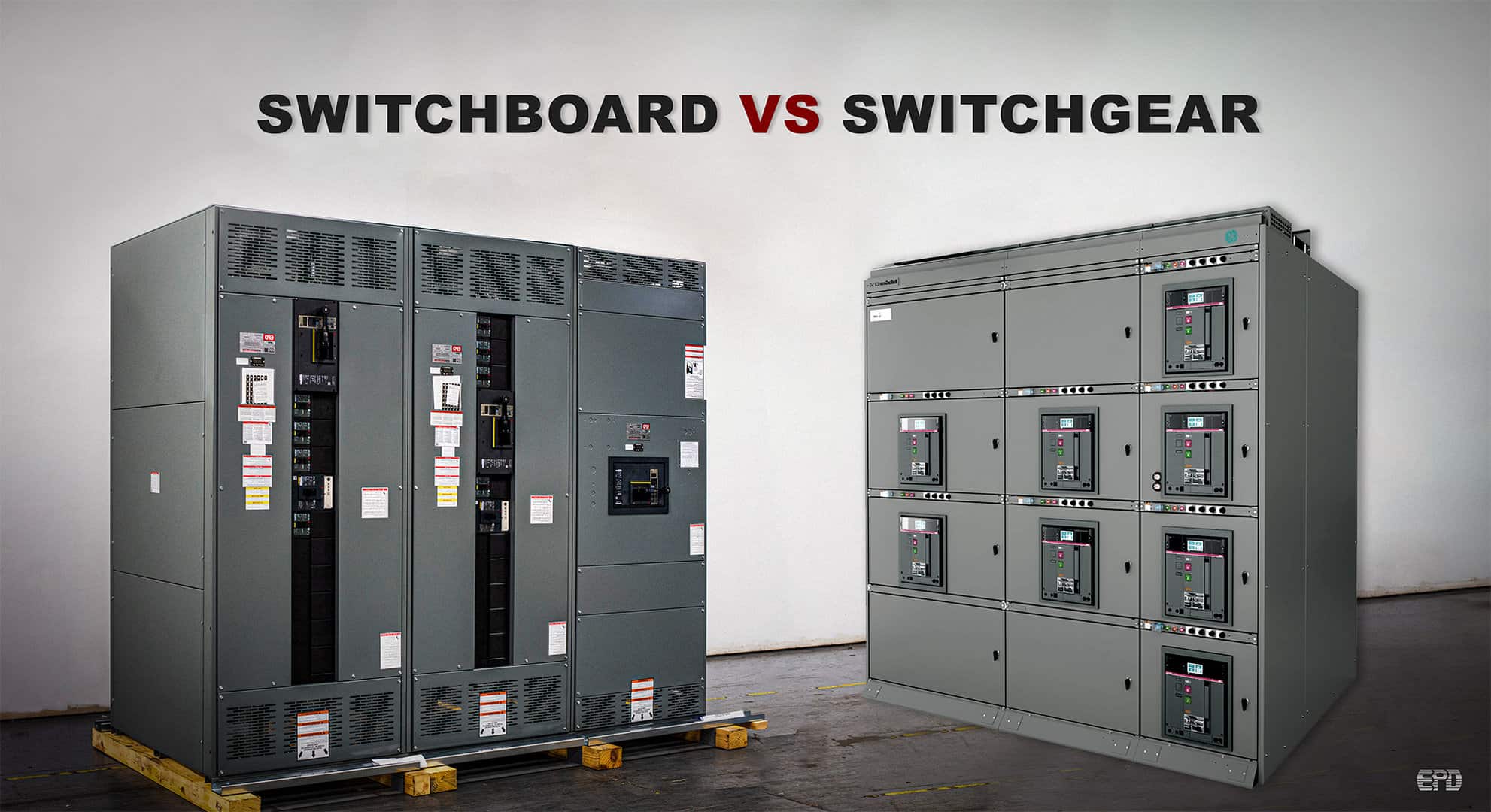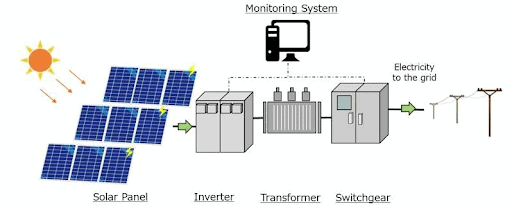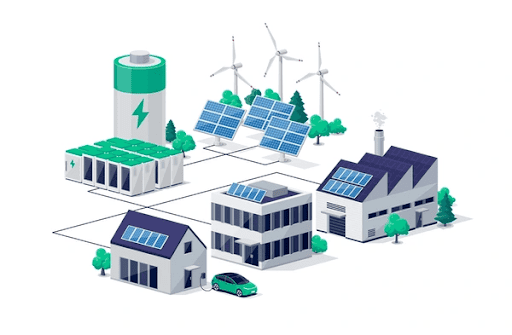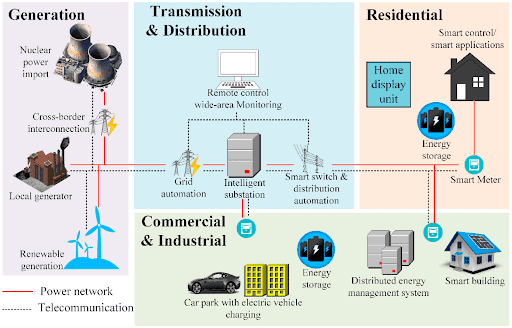What Are the Differences Between Switchgear and Switchboards?
Electrical power distribution relies on the seamless coordination of various components, and at the heart of this operation are LV switchgear and switchboards.
These critical elements play distinct roles in ensuring the safe and efficient flow of electricity within industrial and commercial settings. But can the terms switchboard and switchgear be used interchangeably?
LV switchgear, or low-voltage switchgear, is a centralized system designed to control power flow, offering features like circuit protection and isolation.
On the other hand, switchboards function as free-standing distribution panels, directing power to different loads throughout a facility. While their functions align with power distribution, the terms are only partially interchangeable.

Introduction to LV Switchgear vs. Switchboards
LV Switchgear and LV Switchboard comparison is important to know the technical differences between the two. LV switchgear, or low voltage switchgear, is a centralized system designed to control power flow, offering features like circuit protection and isolation. NEC Article 100 defines "switchgear" as follows:
“An assembly that has sheet metal covering the whole top and sides (except ventilation and inspection windows), and that is equipped with buses and connections for primary power circuit switching, interrupting devices, or both. There may be auxiliary and control devices in the assembly. Doors, detachable coverings, or both can be used to enable access to the enclosure's interior.”
On the other hand, switchboards function as free-standing distribution panels, directing power to different loads throughout a facility. While their functions align with power distribution, the terms are not entirely interchangeable. Article 100 of the NEC defines "switchboard" as:
“A large single panel, frame, or assemblage of panels with switches, overcurrent and other protection devices, buses, and typically instrumentation located on the face, back, or both. These assemblies are not meant to be put in cabinets and are often accessible from both the front and the back.”
In this exploration, we will delve into the nuanced LV Switchgear and LV Switchboard comparison, shedding light on their respective roles and applications in electrical systems.
A Comparative Analysis of Functionality and Components
While both LV switchgear and LV switchboards play vital roles in low voltage electrical systems’ power distribution, their functionalities differ. [1] LV switchgear components place more of an emphasis on electrical circuit compartmentalization, protection and centralized control and protection.
Conversely, LV switchboards place more emphasis on effective power distribution, focusing on routing power to different loads inside a building.
The comparative study demonstrates the unique contributions that each makes to guaranteeing the dependability and security of electrical systems. A detailed LV Switchgear and LV Switchboard comparison is presented in Table 1.
| Aspect | LV Switchgear | LV Switchboards |
|---|---|---|
| Primary Function | Control and protect electrical power circuits. | Distribute and direct power within a facility. |
| Components | Circuit breakers, fuses, relays, and disconnects. | Busbars, circuit breakers, meters, and switches. |
| Usage | Centralized control for power distribution. | Distributes power to various endpoints. |
| Standards | IEC 61439, UL 1558, ANSI C37.20.1, IEC 62271. | UL 891, NEMA, IEC 61439. |
| Voltage Rating | Typically, up to 1000V. | Usually low voltage, up to 600V. |
| Current Rating | Ranges from hundreds to thousands of amperes. (~1600A – 10,000A) | Varied, depending on the application. (~400A – 6,000A) |
| Max Short circuit rating | 200kA | 200kA |
| Customization | Limited customization options. | Can be customized for specific applications. |
| Busbar System | May include segregated or non-segregated busbars. | Typically includes busbars for power distribution. |
| Cost | Higher in Cost | Typically, lower in cost than Switchgear |
| Applications | Industrial power systems, substations. | Commercial buildings, manufacturing and industrial facilities. |
| Safety Features | Emphasis on circuit protection and isolation. | Focus on safety in power distribution. |
| Interchangeability | Generally, not interchangeable with switchboards. | Distinct in function but can be used together. |
Design and Customization
Switchboards have a lower price point than switchgear but are often less maintainable due to their simpler structure.
Modern switchboards sometimes do not require back access, in contrast to the NEC definition.
Although customization is an option with both LV switchgear and LV switchboards, the type of customization varies. LV switchgear components guarantee exact control over electrical circuits by emphasizing protection features and relay settings.
The goal of switchgear is to provide a sturdy and conveniently accessible construction that makes maintenance easier and guarantees quick action in the event of an electrical problem.
Conversely, LV switchboards provide more customization options, enabling variable layout and component selection adjustments to meet the unique requirements of the project.
Modularity and Scalability: Assessing Flexibility and Expansion
Modularity in LV Switchgear and Switchboards
In LV switchgear, Modular design separates components into parts. Protection relays, control panels, and circuit breakers are typically found in modules.
Installing, maintaining, and replacing components is made easier by this modular architecture.
It is possible to update or replace the damaged module without stopping the system. Because of its adaptability, the LV switchgear is more troubleshooting and adaptable in electrical power distribution. [3]
LV switchboards also embrace a modular design, providing flexibility in configuration to meet the unique requirements of different projects.
When needed, more circuit breakers, meters, or other components may be integrated thanks to the modular design.
Electrical experts may readily extend or alter the switchboard to suit new equipment or changing load conditions thanks to its modular design. The scalability of LV switchboards is advantageous to facilities that intend to expand or make modifications in low voltage electrical systems.
Scalability for Future Expansions
In both LV switchgear and LV switchboards, scalability is a key consideration for accommodating future expansions. LV switchgear allows for the addition of modules or the replacement of outdated components to address evolving power system needs.
Similarly, LV switchboards can be scaled up by incorporating additional sections or modifying the busbar arrangement to handle increased loads.
Industry guidelines and regulations for electrical systems
Though standard specifications often cover them during the design process and are, therefore, sometimes disregarded or taken for granted by design engineers, the UL, ANSI, and NEMA standards that specify the construction and testing of switchgear and switchboards are the foundation needed to understand the differences and significance of those differences between the two types of equipment.
The construction of switchboards is assessed using the following criteria and guidelines:
- The switchboard standard is UL 891.
- Deadfront Distribution Switchboards, NEMA PB 2.
The building of switchgear is assessed in accordance with the following guidelines and standards:
- UL 1558 is the standard for low-voltage power circuit breaker switchgear that is enclosed in metal.
- Standard for Metal-Enclosed Low-Voltage Power Circuit Breaker Switchgear (ANSI/IEEE C37.20.1).
- Conformance test procedures for metal-enclosed low-voltage AC power circuit breaker switchgear assemblies are specified in ANSI C37.51.
Unveiling Innovations in LV Switchgear and Switchboards
Innovations in LV Switchgear and LV Switchboards
Recent technological advancements have ushered in a new era for LV switchgear customization, enhancing its performance, safety, and monitoring capabilities. Intelligent electronic devices (IEDs) are now integrated into LV switchgear, providing advanced metering, communication, and protection functions. [4] Microprocessor-based relays offer precise and reliable protection against faults, contributing to the overall reliability of LV switchgear customization. Additionally, advancements in insulation materials and design contribute to improved efficiency and reduced environmental impact.
LV switchboards are included in the wave of technological progress.
Integration with smart grid technologies allows LV switchboards to communicate, monitor, and adapt to changing electrical conditions.
Intelligent control systems enable real-time data analysis, enhancing the overall efficiency of power distribution. Furthermore, the use of touch-screen interfaces and advanced control panels simplifies user interactions, making LV switchboards more user-friendly and facilitating quicker responses to system events.
Enhancing Performance and Safety
Modern technology is included in LV switchgear and switchboards to improve safety and performance requirements. Intelligent protection relays, condition monitoring systems, and diagnostic instruments enable users to gain a thorough understanding of the electrical infrastructure's state.
This initiative-taking maintenance strategy lowers downtime and improves dependability. Furthermore, technical developments respond to the increased focus on sustainability and energy efficiency, bringing LV switchgear and switchboards into line with the changing requirements of contemporary electrical systems.
Energy Efficiency and Sustainability: Navigating the Green Landscape of LV Switchgear and Switchboards
Assessing Energy Efficiency
In the realm of LV switchgear and switchboards, energy efficiency is a critical benchmark for evaluating their overall performance.
Modern LV switchgear often incorporates features designed to minimize energy losses, such as high-efficiency transformers and low-loss circuit breakers.
Advanced insulation materials and improved design practices contribute to reducing power dissipation and optimizing the efficiency of electrical distribution systems.
Contributions to Sustainable Practices
Switchboards and LV switchgear are essential components in the advancement of green and sustainable energy techniques.
The flexibility and interoperability of LV switchgear enables the incorporation of renewable energy sources, including wind and solar power, as seen in Figure 2.
Conversely, switchboards offer a centralized center for the management and distribution of electricity from many sources, promoting a more robust and sustainable electrical infrastructure. [5] The versatility of these systems in balancing and maximizing the use of renewable energy is further enhanced by their capacity to integrate energy storage options.
Championing Sustainability
As industries worldwide pivot towards sustainability, LV switchgear and switchboards emerge as key players in the journey toward greener energy practices.
Their role in maximizing energy efficiency, supporting renewable integration, and embracing sustainable design positions them as essential components in building an eco-conscious electrical infrastructure, as depicted in Figure 3.
The ongoing commitment to enhancing energy efficiency and sustainability reinforces LV switchgear and switchboards as cornerstones of a responsible and forward-looking approach to power distribution.
Cost-Benefit Analysis and Financial Implications of LV Switchgear and Switchboards
Conducting a Comprehensive Analysis
A comprehensive cost-benefit analysis is imperative when assessing the financial implications of LV switchgear and switchboards. This involves not only the initial capital expenditure but also operational costs, maintenance expenses, and potential savings over the system's life cycle.
While switchgear may have higher upfront costs due to its intricate design and advanced features, switchboards might offer a more straightforward and cost-effective solution for certain applications.
Long-Term Financial Implications
Understanding the long-term financial implications of LV switchgear and switchboards requires a thorough examination of factors such as energy efficiency, maintenance requirements, and adaptability to evolving needs.
Future Trends and Developments: Navigating the Evolving Landscape
As technology continues to evolve, the future of LV switchgear and switchboards holds exciting possibilities. Predicting trends involves anticipating advancements in materials, digitalization, and automation that can enhance performance, reliability, and sustainability.
Innovations in connectivity, predictive maintenance, and smart grid integration are likely to shape the trajectory of both solutions, as explained in Figure 4. The integration of artificial intelligence, data analytics, and the Internet of Things (IoT) is expected to play a pivotal role in the evolution of LV switchgear and switchboards.
Conclusion
To guide decision-making, when we do LV Switchgear and LV Switchboard comparisons, it is essential to recognize that there is no one-size-fits-all solution.
The choice between LV switchgear and switchboards should consider the requirements and limitations of every project. It is recommended that decision-makers collaborate closely with electrical engineers to consider several issues, including system complexity, future scalability, and the changing electrical infrastructure landscape.
In the end, making well-informed decisions requires a deep comprehension of the special qualities and functionalities of both LV switchgear and switchboards, which can only be achieved via the effective use of dependable and effective power distribution solutions.
References
- Luo, Ruibin, Ming Tang, and Deliang Liang. "On-site partial discharge test of medium voltage switchgear by time of arrival method." 2014 17th International Conference on Electrical Machines and Systems (ICEMS). IEEE, 2014.
- Sun, Ying, et al. "Efficient power outage perception and recovery processing solution in low voltage power grid." (2019).
- Southall, M., and A. Anbarasu. "Comparative Assessment Between LV & MV Electrical Power Systems & Equipment for Marine Applications." Conference Proceedings of INEC. 2022.
- Pálfi, Judith, Miklós Tompa, and Péter Holcsik. "Analysis of the efficiency of the recloser function of lv smart switchboards." Acta Polytechnica Hungarica 14.2 (2017): 131-150.
- Cho, Youngpyo, et al. "Application of LVDC Distribution Switchboard System with New and Renewable Energy Source on the Demonstration Site." (2019).



